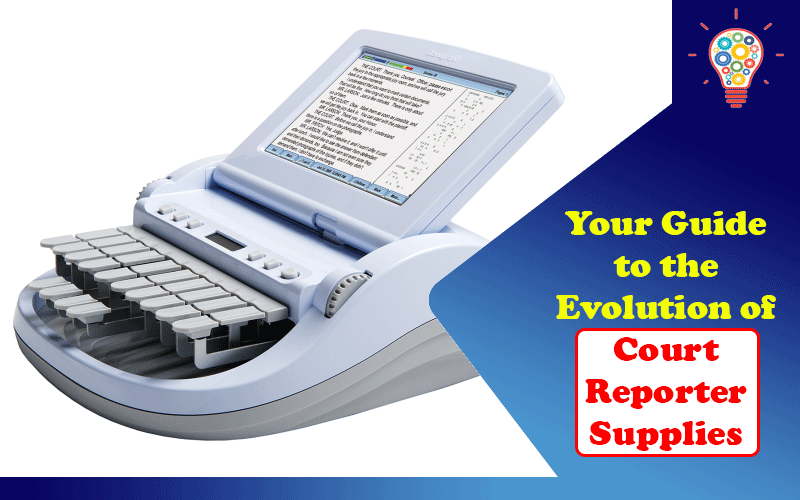The noble profession of court reporting can trace its roots back to 63 B.C. Back then, Marcus Tullius Tiro was employed as Cicero’s secretary and created a form of shorthand for efficient recordkeeping.
While it may seem like an easy job, it requires a high degree of accuracy, skill, and learning ability. The responsibility and tasks may not have changed much over time, but the court reporter supplies have seen several developments.
This guide to the history of court reporting supplies will walk you through the past, present, and future of this valuable profession.
Table of Contents
What Does a Court Reporter Do?
A court reporter creates an accurate transcript of everything that happens during the judicial process. This impartial party captures the words spoken by everyone in attendance during a deposition or court proceeding. These verbatim transcripts are then used in future proceedings as evidence.
Historical Court Reporter Supplies
The first court reporters in the United States began work in the early 1800s. Their supplies consisted of an inkwell and paper. The reporter would then manually write down the transcript in real-time.
Inkwells were soon replaced by pens with the ink already inside. Typewriters and the stenograph then replaced them.
Current Court Reporter Supplies
The gold standard of court reporter supplies is the stenograph, which is a court reporter keyboard. It’s like a typewriter but has extra special keys that phonetically spell out sounds. There are three types of stenographs. You can learn about them here.
Some courts allow reporters to use audio-visual devices. This creates a video recording of what happens. High-level courts put a restriction on this, though. It’s also challenging to get a clean audio file since it requires rigging several microphones throughout the courtroom.
The third option for reporters is to use a steno mask. This is a mask that fits tightly over the reporter’s face and has a small microphone inside. The reporter repeats everything they hear in real-time to create a voice narrative of the events.
The Future of Reporter Supplies
The future of court reporter supplies is to go automated. Lawyers and other court officials are considering whether a digital court reporter would be just as effective. Voice recognition software, microphone quality, and large storage capacities make this a possibility.
This would make in-person court reporting services obsolete. The advantage is the ability to have a more accurate record of court happenings. By eliminating the person making the recording, you reduce the risk of human error.
What Supplies Will You Use?
As a professional court reporter, it’s crucial that you stay up to date on current and future court reporter supplies. While many push for AI to fully replace the court reporter position, we aren’t quite there yet. Staying abreast of technology developments helps you to develop your skills and remain invaluable to the attorneys and courts that you serve.
Check out our other articles for more helpful information about the changing innovations.

